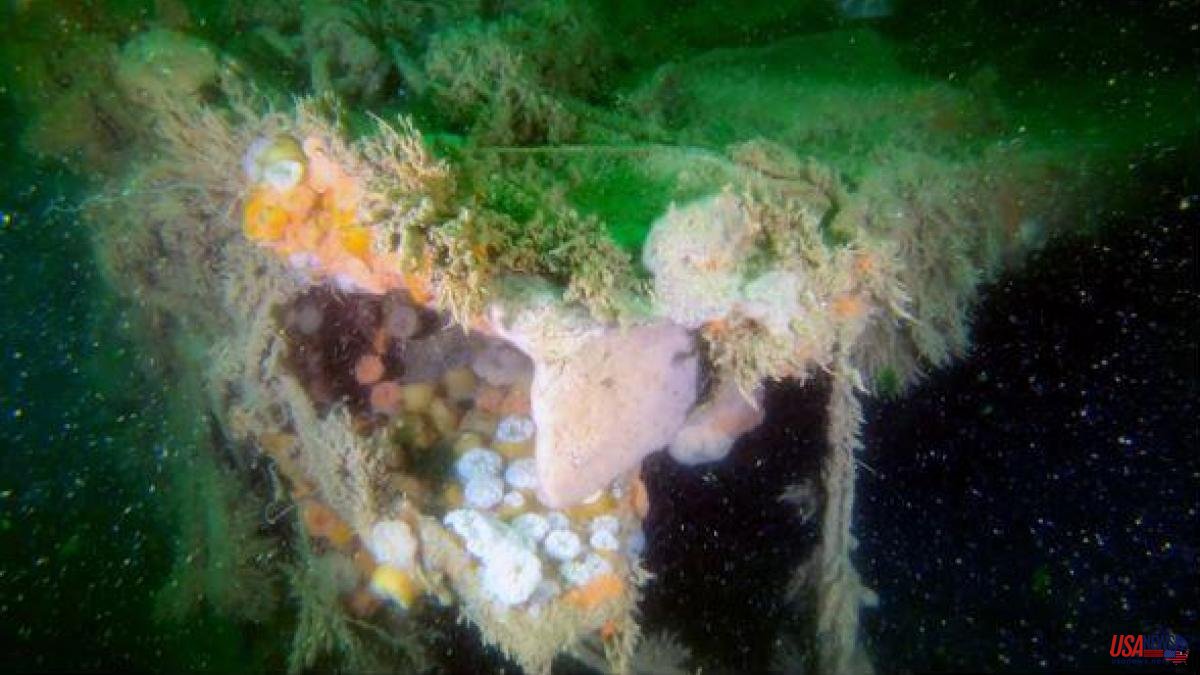The V-1302 John Mahn was a German fishing trawler that was requisitioned by the Nazis during World War II for use as a patrol vessel. In February 1942, during Operation Cerberus, a successful plan to evacuate German cruisers from the port of Brest, France, the John Mahn was attacked by the British Royal Air Force off the Belgian coast.
One of the bombs dropped by the British planes hit the V-1302 and the ship quickly sank to the bottom of the North Sea, whose seabed is today covered by thousands of ship and aircraft wreckage, weapons of war and million tons of ammunition such as projectiles and bombs.
All of these wrecks contain dangerous substances such as fuel derived from petroleum, heavy metals and the aforementioned explosives. Substances that, 80 years after sinking, still pose a threat to the marine environment, according to a team of Belgian researchers in an article published in the journal Frontiers in Marine Science.
Precisely, the debris that the V-1302 John Mahn continues to filter into the salt water still influences the microbiology and geochemistry of its surroundings, especially the sediment on the ocean floor. Experts point out, however, that there is still a lack of information on the location of all war debris and its impact on the environment.
"The general public is often quite interested in shipwrecks due to their historical value, but the potential environmental impact of these sunken vehicles is often overlooked," explains Josefien Van Landuyt of Ghent University.
Specialists estimate, for example, that World War I and World War II shipwrecks around the world contain between 2.5 and 20.4 million tons of petroleum products. "While they can function as artificial reefs and have tremendous human storytelling value, we must not forget that these ships can be dangerous objects that have been unintentionally introduced into a natural environment," continues Van Landuyt.
"Today new wrecks are removed for exactly this reason," adds the researcher. To analyze the biochemistry and geochemistry around the John Mahn, samples were taken from the steel hull and the sediment in and around it, at increasing distances and in different directions.
Thus, varying degrees of concentration of toxic contaminants were found depending on the distance from the wreck. In particular, heavy metals (such as nickel and copper), polycyclic aromatic hydrocarbons (PAHs, chemicals found naturally in coal, crude oil, and gasoline), arsenic, and explosive compounds were found.
The highest concentrations of metals were found in the sample closest to the ship's bunker. The newly deposited sediment after sinking had a high metal content. The highest concentrations of PAHs were closer to the craft.
"Even if we don't see these old shipwrecks, and many of us don't even know where they are, they may still be polluting our marine ecosystem," explains Van Landuyt. "In fact, their advanced age could increase the environmental risk due to corrosion, which is opening previously closed spaces," he adds.
The experts also found that the ship influenced the microbiome around it. PAH-degrading microbes known as Rhodobacteraceae and Chromatiaceae were found in samples with the highest content of contaminants. Additionally, sulfate-reducing bacteria (such as Desulfobulbia) were present in the hull samples, which likely led to corrosion of the steel.
Josefien Van Landuyt points out that this study is just the tip of the iceberg. "We forget that below the surface of the sea, we humans have already had a huge impact on the local animals, microbes and plants that live there and we are still impacting those areas with chemicals, fossil fuels or heavy metals of sometimes a century old, wrecks that we don't even remember are there”, he concludes.













